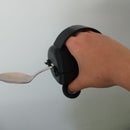Introduction: Exoskeleton Prototype
Gait, the process of walking, is a complex and intricate movement pattern that requires a sophisticated interaction between various body systems. The gait cycle can be divided into two phases: stance phase and swing phase. During the stance phase, the foot is in contact with the ground and the leg supports the weight of the body. During the swing phase, the leg lifts off the ground and moves forward to prepare for the next step.
The stance phase is divided into five intervals, each with its own movement pattern. The first interval is the heel strike, in which the heel of the foot makes initial contact with the ground. The second interval is the plantar strike, in which the rest of the foot makes contact with the ground. The third interval is the medial strike, in which the weight of the body shifts toward the midline of the foot. The fourth interval is the heel lift, in which the heel of the foot is lifted off the ground. Finally, the fifth interval is the foot swing, in which the foot rolls forward to prepare for the swing phase.
The swing phase is divided into three intervals: acceleration, mid swing and deceleration. During the acceleration interval, the leg lifts off the ground and begins to move forward. During the mid swing interval, the leg continues to move forward and the foot begins foot rotation. Finally, during the deceleration interval, the leg slows down as it approaches the ground to take the next step.
To better understand the mechanics of walking, researchers have developed prototype exoskeletons that simulate the walking motion. These exoskeletons use servomotors to move the joints of the exoskeleton, mimicking the motion of the human body during the gait cycle.
Supplies
a) 6 Servo motors
b) 6 Fixing plates to servo motor
c) 12 M3 x10 screws
d) 12 M5 x10 screws
e) 12 M5 nuts
f) 6 screws to servo motor
g) 1 MDF board 3mmx0.61x1.20m
h) 1 Arduino UNO
i) 1 Baterry 9V
j) Dupont wires
k) 1 Screwdriver set
l) 1 Protoboard
Step 1: Prototype of the Structure
The parts of structure was designed in SolidWorks 2022. The estructure needs 6 different pieces of MDF:
a)Simulacion_tibia
b)Simulacion_perone
c)Simulacion_cadera
d)Femur
e)Pie
Step 2: Cut the Pieces
The files created in solidworks must be saved as DXF files selecting the face that will serve as a guide for cutting.
The files created in solidworks must be saved as DXF files selecting the face that will serve as a guide for the cut.
Subsequently, the pieces must be cut, it is important to cut two pieces of each file in the MDF, except for the base.
Step 3: Assembly
Place the servomotors in the rectangular spaces of the pieces and join them using the fixing plate to the servomotor and the screws in the corresponding spaces. Once the motors are in place, the hip, fibula, tibia and foot pieces, these are joined with the stars to allow movement.
Step 4: Connection to Arduino
Each of the servo motors should have two wires connected to the battery, one to positive and one to negative, and a third wire should go to the Arduino with the protoboard.
From the six servos, they work in pairs to make movement:
Hip servos move along 180 degrees.
Tibial and fibula servos move along 90 degrees.
Foot servos move along 45 degrees
Note: Don't power the servomotors with the voltage of the Arduino board
Step 5: Programming
Write the code to move the servomotors, adjusting the bending angles of each joint.
Hit the "verify" button in the app to make sure the code is written correctly and then hit the "upload" button to upload the code to the Arduino board.
Attachments
Step 6: Functionality Test
Connect the battery to the circuit and verify that the prototype works.









